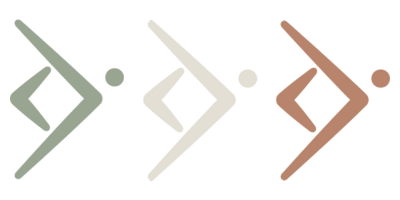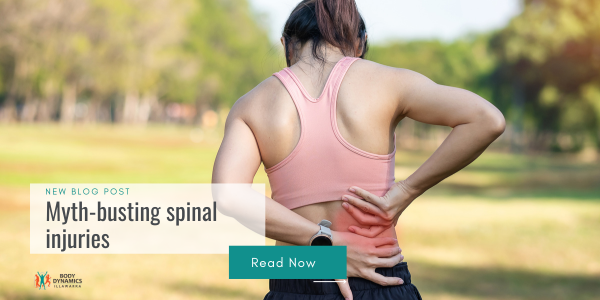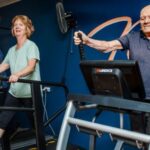Myth-busting spinal injuries
Most people have a very particular idea of what life with a spinal injury looks like. But appearances can be deceiving. It’s a popular and often harmful misconception that anyone with a spinal injury needs a wheelchair. But this is simply just not true.
In fact, plenty of spinal injuries cause what are known as “invisible symptoms”. This type of symptom goes unnoticed by the casual observer as it tends not to manifest with obvious physical signs. Invisible symptoms can vary in type and severity, but are just as valid, and can be just as life-altering, as other more “visible” symptoms.
The stigma of invisible spinal injuries
In a society that primarily associates spinal injuries with visible disability, people who experience invisible symptoms can face a unique kind of isolation. The lack of external evidence of their condition can lead to scepticism from others, making it difficult to validate their pain.
Friends, family, and even healthcare providers might unwittingly downplay the struggles a person faces with a spinal injury. They may assume that the suffering must be less significant if there’s no visible physical evidence. This stigma not only diminishes the experiences of people with spinal injury but can also discourage them from seeking the support they need.
Spinal injuries and their invisible symptoms
Of the 20,800 Australians living with a spinal injury, only one-third live with severe and visible symptoms. This third has very limited mobility, which impedes their independence and general bodily function. But what about the remaining two-thirds of that population?
The invisible symptoms experienced by people with spinal injuries can greatly vary. Some common invisible symptoms include chronic pain, bladder dysfunction and bowel dysfunction. However, in most cases, symptoms vary from injury to injury, and no two people will have the exact same experience.
Herniated Disc
A herniated disc occurs when the internal component (nucleus – jelly like substance) of the intervertebral disc pushes out of the rubbery external component (annulus). People will often refer to this as a ‘slipped’ disc however that conjures up visions of the actual disc moving out of its place similar to a dislocation, which just is not the case. While this type of spinal injury can happen in any part of the spine, it is often associated with the lower back. Depending on its location, a herniated disc can cause weakness, numbness, or pain in the back, arms and legs, and may contribute to symptoms such as sciatica.
For some people, the invisible symptoms associated with this type of spinal injury can be debilitating. Their ability to perform everyday activities, including walking, standing, or even sitting comfortably, is limited. As well as this, the pain can radiate down their limbs and lead to mobility difficulties. Fortunately, as recovery occurs, these symptoms often improve naturally over time, with surgery rarely being necessary.
Spinal stenosis
Spinal stenosis is a spinal condition that occurs when the space within the spine canal becomes narrower. This places pressure on the spinal cord and nerves, commonly in the lower back or neck area. Its primary cause is typically arthritis-related changes in the spine and is often associated with normal ageing.
People who have spinal stenosis in their lower back may experience pain in the area and cramping in the legs, which impacts their ability to comfortably walk and stand. People who have spinal stenosis in their neck may experience pain, tingling, numbness or weakness along the limbs and problems with their balance. In some cases, these symptoms can gradually worsen, occasionally requiring surgery.
Spinal cord compression
Spinal cord compression refers to pressure on the spinal cord that may arise from factors such as bone spurs or tumours. Invisible symptoms of this spinal injury include a loss of sensation, impaired reflexes, numbness or weakness in the limbs, and coordination difficulties. These symptoms can make simple tasks like walking, grasping objects, or maintaining balance challenging.
Spondylolisthesis
Spondylolisthesis is a spinal condition where one vertebra in the spine sits forward over the one below it. Most symptoms are invisible that may significantly affect a person’s quality of life. These symptoms often involve nerve compression, leading to radiating pain, numbness, or weakness in the legs. The neurological symptoms of spondylolisthesis can also impact mobility and dexterity.
The consequences of invisible symptoms
Any of these invisible symptoms related to spinal injury can have significant consequences on a person’s life. The pain they experience can be so severe that it makes everyday activities challenging, and it can hinder their ability to maintain an active and fulfilling lifestyle. What’s more, these hidden symptoms can lead to the potential loss of control over bodily functions like bladder and bowel activity, as well as sexual dysfunction, causing emotional distress and loss of independence.
Even though these spinal injury symptoms aren’t immediately visible, they have a significant impact on essential aspects of life like walking and overall well-being. As the Australian Institute of Health and Welfare highlights, people with back ‘problems’, including those with invisible symptoms, are more likely to report poor health, psychological distress, and bodily pain, underscoring the substantial impact of invisible symptoms on their quality of life.
It is worth noting that a high percentage of the population has been shown to have spinal changes WITHOUT any symptoms and hence this provides us with a lot of opportunities to improve the quality of life for the person living with back pain.
Many of these conditions are chronic and develop over time, and hence the great news for people living with back pain is that most of the conditions mentioned will improve with targeted exercise and movement. If you have a spinal injury.condition, even if you have tried exercise as treatment before, it would still be worth contacting Body Dynamics Illawarra to learn about their approach to back pain. To start your recovery and physical well-being journey, contact us today for more information on how we can work together.










